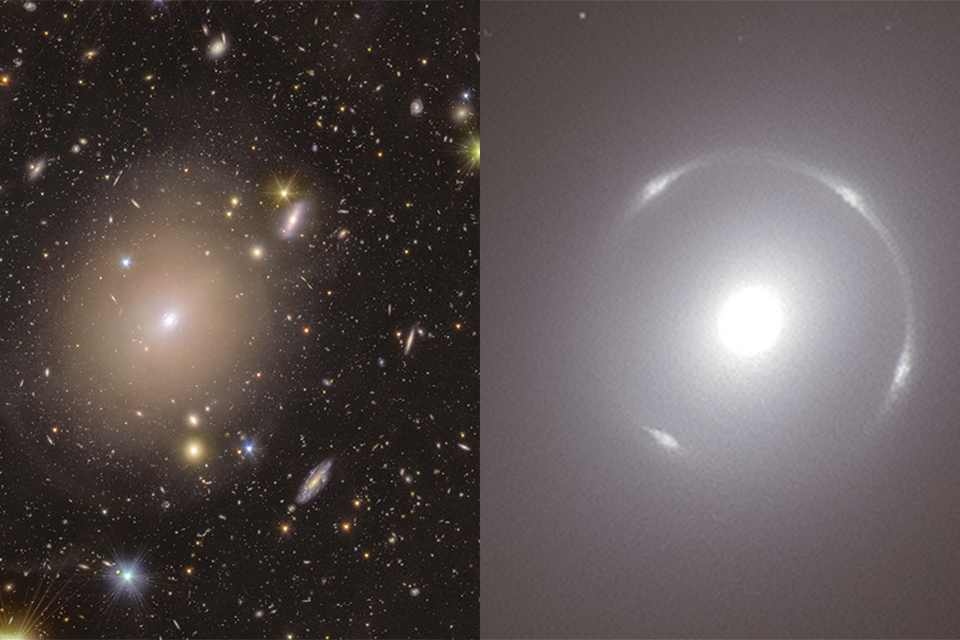Lehman Today
Lehman College Astronomer Helps Uncover a Stunning Space Oddity in Earth’s Backyard

A Lehman College astrophysicist is part of an international team that has discovered an extremely rare phenomenon in a galaxy not so far away—and it is big news in spacetime.
Assistant professor of Astronomy Georgios Vernardos worked on calibrating and testing data models for the Euclid Space Telescope, launched by the European Space Agency in 2023, that enabled the group to analyze Euclid’s preliminary data and images. These revealed that the galaxy, called NGC 6505, is surrounded by an Einstein ring—a ring of light that looks like a halo.
“This is an unexpected finding, something that was always there but we just needed to gain this new perspective,” Vernardos said.
Watch the recent feature on WNBC News.

Euclid’s mission is to map the dark Universe by locating unobservable, or “dark” matter that is only detectible by its gravitational effect on visible objects, such as stars and galaxies.
The phenomenon is far more than “a trick of the light.” Albert Einstein’s general theory of relativity predicts that gravity will bend light around objects in space, so that they focus the light like a giant lens. This effect, called gravitational lensing, is stronger for more massive objects like galaxies and clusters of galaxies, and that creates opportunities to see the light from distant galaxies that would otherwise be obstructed or too dim. If the alignment is just right, the light from the distant source galaxy bends to form a spectacular ring around the foreground object.
“Telescopes see light from stars, not the actual mass that produces this light, however, gravitational lensing is sensitive to the entire mass, bright or dark,” said Vernardos.
“This is crucial for understanding dark matter and how it shapes the galaxies that we observe throughout the Universe.”
Einstein rings are a rich laboratory for scientists. Studying their gravitational effects can help us learn about the expansion of the Universe and investigate the background source whose light is bent by dark matter in between us and the source.
“Ideally, this specific lens, which is very close to us, will allow us to look for and hopefully find evidence for the properties of dark matter, Vernardos said.
Fewer than 1,000 such gravitational lenses are known to exist, and none so close. NGC 6505 is just 590 million light-years from Earth—a stone’s throw in cosmic terms. The light itself is coming from a more distant bright galaxy, 4.42 billion light-years away from us, that hasn’t been seen before and doesn’t yet have a name. According to Vernardos, the NGC 6505 lens could even be used as a natural telescope to study that distant, newly discovered galaxy.
NGC 6505 was catalogued in the 1890s, but it took 140 years to develop an instrument sensitive enough to detect its ring. Einstein himself, who theorized the existence of these gravitational lenses, never thought it would be possible to see one.
“Euclid is an instrument that will revolutionize the field of gravitational lensing, discovering 1,000 times more lenses than we currently know,” Vernardos said. “We eventually want to model all of these lenses and learn how matter, and especially dark matter, is distributed in galaxies.”
Read more about Vernardos and the discovery in The Riverdale Press.
